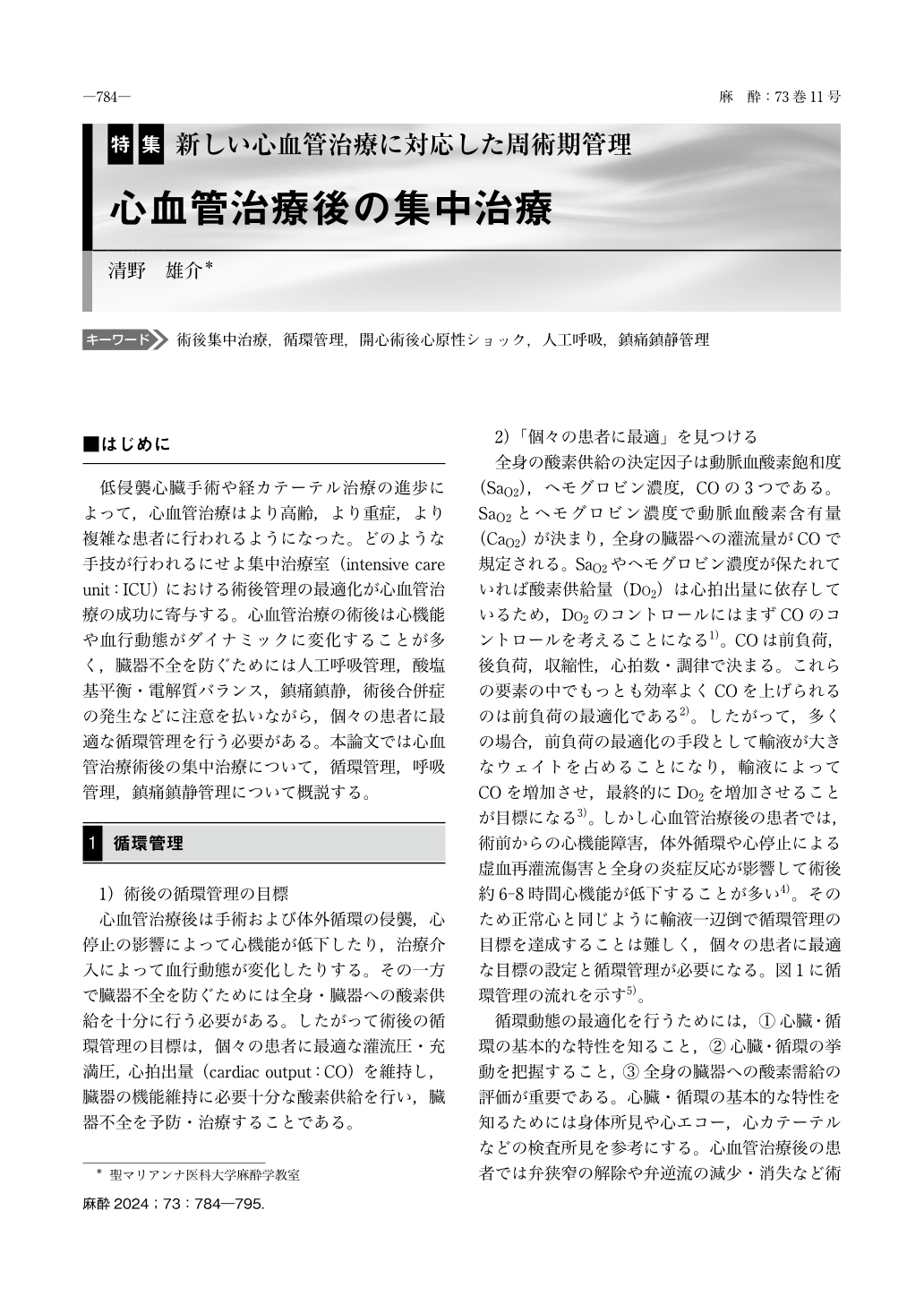Japanese
English
- 有料閲覧
- Abstract 文献概要
- 1ページ目 Look Inside
- 参考文献 Reference
はじめに
低侵襲心臓手術や経カテーテル治療の進歩によって,心血管治療はより高齢,より重症,より複雑な患者に行われるようになった。どのような手技が行われるにせよ集中治療室(intensive care unit:ICU)における術後管理の最適化が心血管治療の成功に寄与する。心血管治療の術後は心機能や血行動態がダイナミックに変化することが多く,臓器不全を防ぐためには人工呼吸管理,酸塩基平衡・電解質バランス,鎮痛鎮静,術後合併症の発生などに注意を払いながら,個々の患者に最適な循環管理を行う必要がある。本論文では心血管治療術後の集中治療について,循環管理,呼吸管理,鎮痛鎮静管理について概説する。
Advances in minimally invasive cardiac surgery and transcatheter interventions have enabled cardiovascular treatments for older patients and patients with more severe and complex conditions. Regardless of the procedure, the optimization of patients’ postoperative management in the intensive care unit contributes to the success of cardiovascular interventions. Postoperative cardiovascular treatments often involves dynamic changes in patients’ cardiac function and hemodynamics, requiring optimal hemodynamic management tailored to each patient to prevent organ failure. Attention should be paid to mechanical ventilation, the acid-base balance, electrolytes, analgesia, sedation, and postoperative complications. Postoperative intensive care management after cardiovascular interventions requires a comprehensive approach to optimize patient outcomes. Hemodynamic management aims to maintain the optimal perfusion pressure, filling pressure, and cardiac output for each patient, ensuring sufficient oxygen delivery to organs and preventing organ failure. Respiratory management involves adequate mechanical ventilation and liberation of the ventilator based on spontaneous awakening and breathing trials while considering early extubation when appropriate. Analgesia and sedation management prioritizes pain control and the maintenance of light sedation levels to improve clinical outcomes. By understanding the principles and strategies of postoperative intensive care management, intensivists can provide individualized care to patients undergoing cardiovascular interventions.

Copyright © 2024 KOKUSEIDO CO., LTD. All Rights Reserved.


